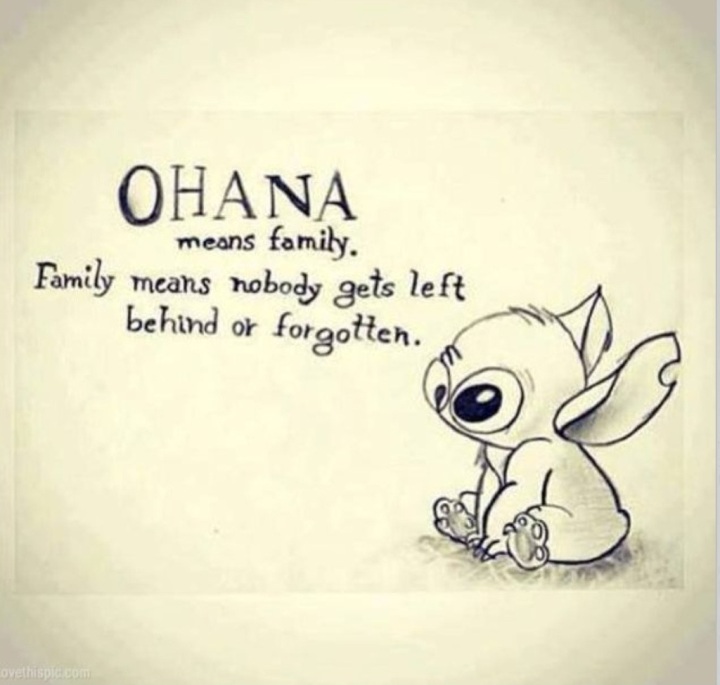Animals are something invented by plants to move seeds around
An extremely yang solution to a peculiar problem which they faced
Now I must take their medicinespoiler
the medicine is drugs.
The “species domestication” bit is just the social part of evolution (less agressive, more cooperarive) mistaken as self-domestication.
I prefer to serve trees and plants rather than CEOs
no one tell trollivier about the Central Executive Organism, that giant tree that is like a million trees and fungus
Pando? But that’s only in the ten-thousands.
They (the predecessors of cyanobacteria) started with a clean slate/with an oopsy of oxygen overproduction that wiped the board.
The first recorded genocide.
Closer to omnicide, like, basically everything died.
It took a long time tho.
I thought it was fungi, as they are the ones breaking both plants and us down, are the oldest of all of us, both feed plants and us, etc.
I thought fungi was relatively new - which is why we have coal?
I am very happy to be corrected
Fungi are older than literal roots. The first land plants relied on them for nutrient exchange before evolving a radical system. My mind was blown away during a presentation by Dr. Toby Kiers about the latest research on mycorrhizal networks. They directly imaged nutrients moving both ways through those narrow filaments! Which is impressive on its own, but completely mind-fucked me when I noticed they were in real-time. https://www.spun.earth/networks/mycorrhizal-fungi
Radiolab Episode from Tree to Shining Tree (air date 7/30/2016) is a really fun episode about mushroom networks.
Confirmed: Fossil Fuel Capitalism is a righteous slave revolt
You mean the thing where we put tons of greenhouse gases in the air which warms the planet and makes it even better for photosynthesizing life, but even worse for mammals?
yeah but i eat trees, so that puts me on top of the food chain
Sadly I’ve still never seen any real papers on this being an actual theory.
I still want to believe I’m Ent livestock though.
Against The Grain by James C Scott touches on the “who actually domesticated who” question.
It’s because it doesn’t really make sense, plants came before animals. Plants do not need us to survive, but we need plants to survive.
Plants came before moths, but there are some desert plants whose life cycle is dependent on a species of moth pollinating them. How things were in the past influences but isn’t the sole arbiter of how things are in the present or future.
Which isn’t to say that it’s strictly true, I think it serves more purpose as a thinking exercise than a scientific theory. But I don’t think it’s impossible that it’s true, either.
“Some” being a key word there. Plants, as a whole, are not dependent on mammals for their existence.
Yeah, I don’t think the OP was saying every plant in existence is dependent on humans. But crops are, and we’re dependent on them. Co-domestication, I guess.
most of them, but they all can naturalized and go feral and become weeds. plants that are triploid which is artificially induced by people are totally dependant on humans for survival, aka watermelon, cavendish banannas ,etc. crops become feral overtime.
the advatange of plants becoming feral, is that most of them have high ploidy numbers for chromosones, rather than the usual 2 copies. some can have 1-20+ copies of thier chromosome., even crops, this allows plants to have copies of genes that can be somewhat detremental, but not affect the plants fitness, because they multiple copies of the same normal gene, those same copies can also evolve to give selective advantage. thats why some weeds or invasive plants are very hard to eradicate. reproduce extremely fast, asexually or otherwise or poisonous which makes them highly resistant to pests.
I’ll save you a Google: NO, high ploidy numbers in people sadly do not seem to be quite as positive and delicious.
plants like magnolia used beetles for pollination, magnoliads being a very ancient lingeage of plants. its only very later before bees, moths, and then butterflies became the dominant pollinators, and then mammals.
We don’t need chickens to survive either. It doesn’t mean we didn’t domesticate them.
Things change tho, they can “evolve” so to say.
plants came from red algae i believe, that was able to survive on land as primitive bryphytes, or thier ancestors. carbiniferous period is when they really took off. Plants encorporated both chloroplast and mitochondria endosymbionts in thier evolution.
Plants need us animals to turn that oxygen they produce back into carbon dioxide for them.
Nope, fungi and other decomposers do that.
I’m decomposing with the best of them, my friend.
Eh, oxygen builds up, fire, CO2…
Which MOST plants seem to want to avoid… (although for others it has become a necessity, depends on what you are used to I guess)
Bacteria grow us for their homes. They run the show.
Brb, gotta go buy some cat food.
No, toxoplasmosis is a parasite! Very different! Parasites are also susceptible to bacterial and viral diseases!
Consider the Navel Orange. Completely unable to reproduce on its own, yet it has millions of progeny because of people like you!
its a clone of a clone, much like the cavendish bannana, and cultivars of watermelons. and apples too.
fun fact, there is actually a cold tolerant wild orange that grows in the wild, the trifoliate orange, but its not super edible because its extremely bitter flesh, and it has thorns, and its more resistant to disease than domesticated oranges.
Every seedless fruit is a testament of how humanity has deviated from its original, seed nurturing purpose.
Navel gazers?
That reminds me. Need to go clone some grape cultivars and do some more guerilla gardening at my buddy’s house
The botany of desire is a fun book written on the subject. Michael Pollan is not a scientist though, he’s a science and environmental journalist and Harvard professor.
For anyone interested: Welcome to Night Bale is a great horror/surrealist podcast. Definitely recommend
I think it’s the fungi manipulating all of us.
Look man. Mycelium. It’s all connected don’t you see? I don’t mean clones. They’re not clones. Its something else. It’s one BIG connection. It’s one BIG organism.
And it’s MASSIVE. You think it’s just a little mushroom on the forest floor. But under that mushroom is a string. A string that connects to another string that may be connects to a root or another mushroom. Then strings with no mushrooms between the trees. And the strings outpace the trees.
So the direction the trees grow in? Isn’t decided by the trees, or the larger environment around it at all. It’s decided by the mycelium. They grow outward, find the nutrients, and set the conditions for seeds to grow there, and change conditions elsewhere.
The war between fungi and bacteria is an ancient and bloody one.
I don’t fear the bacteria. No. They can colonize and grow resistance to antibacterials produced by the fungi and chemists. But fungi? Fungi can communicate. Fungi can parasitize. Fungi can grow in radiation contaminated environments.
They are the dominant lifeform on this planet.
And if you still don’t believe me, wait until you inexplicably have a yeast infection despite practicing hygiene taught at a super young age. That itch. That pain. It’s a higher evolved organism consuming everything.
First we had !NotKenM, now we need !NotStamets.
If all the yeast in our bodies’ microbiomes could coordinate together to take us over, we’d be so screwed.
That top sentence has a bunch of flavor text. Livestock implies they’re intentionally being kept as livestock. Plants aren’t sentient. That’s like saying evolution is intentional.
Plants aren’t sentient.
That’s what Big Vegan wants you to think!
Keep in mind that “Welcome to Nightvale” is a Lovecraftian comedy podcast set in the fictional town of Nightvale
I mean it’s true… but there’s a pretty reasonable case that humans aren’t sentient. We think we’re doing shit for a good reason but at the end of the day on a large scale we’re just going through the motions of what our environment leads us to do.
This is why I don’t like determining an organism’s value based on how “sentient” it is. I prefer to admit that I treat dogs and pigs better than carrots and fish because I empathize with them more, entirely of my own bias. I don’t think I have any more or less value than a blade of grass; we’re both products of happenstance just running our programming, and we won’t be around long.
Plants aren’t sentient by our understanding of sentience there’s evidence that they communicate via the mycelium network and give their own offspring more nutrients than others. That‘s the two I can think of without googling
What other understanding of sentience would we fucking use?!
The mycelium network thing is way overblown - it allows some crude,undetectedundirected signals to pass.I see it as a problem to solve - we know that signals pass because of the results, but we have yet to detect them
I typo’d “undirected” if that affects anything.
My point is, people talk about this as if it’s the plants having a nice chat and a cup of tea and talking about politics. It isn’t - it’s more like a dog being able to smell some dog piss and understand something about the dog that pissed there.
They also nurse their sick and keep stumps from dying - from The Secret Life of Trees, which also supports your comments
some plants respond to stimuli, they aren’t sapient. cuss out your local science fiction editor.
Plants arent sentient. water reacts to “stimuli”, reacting to your surroundings does not imply sentience 🤦
Literally all life responds to stimuli
The most successful organism on earth is wheat
You might say they’re… Bread for successNever mind, sorry I hate it
Until we have evidence for a higher sentience from plants this is just how living organisms develop and evolve alongside other organisms who they have a symbiotic with.
So it’s a symbiotic relationship…
yeah, thats what she said…
It was a play on the fact that we are still being used.
I still don’t get it, she literally said it’s symbiotic? What am I missing?
Just posting Human Domestication Guide on main smh
What are signs of ‘species domestication’?


















